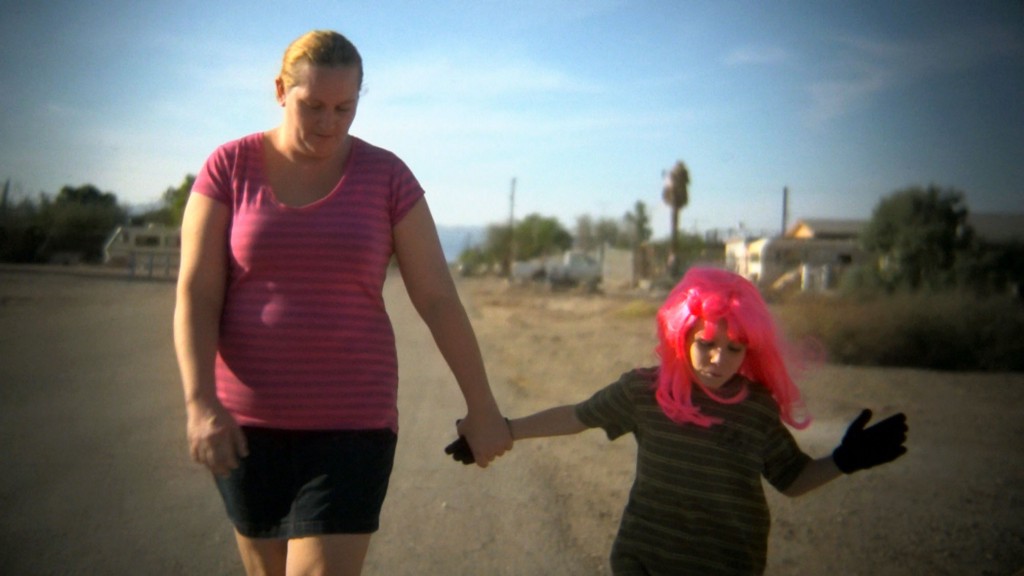Class Fictions, Reality Poetics And Zany Sex At Tribeca
by Seth Colter Walls

When living as young and less than comfortable in New York, adoption of a willed ignorance regarding some class distinctions is in order. You naturally choose your own “can’t-care” moments, but at some point, simply everyone breaks. Also: few can keep up with each and every conversation anyway; choices must be made regarding which ambient fashion truths to blow past and ignore.
That in mind, step this way with me. When I was a rice n’ beans-subsisting college kid, it could have been a function of my fancy-meter’s needle constantly skipping in the fritzed-out red zone of class detection — but I simply had no idea at all that the Tribeca Film Festival was ever considered anything but recherche. It seemed impossibly glam and refined, yet another Shangri-la for aspiring culture nerds to airily daydream about someday crashing. So leave it to the Times’ Stephen Holden to show up my decade-long class ignorance with his curtain-raiser for this year’s edition of the event, which apparently is no longer “considered a threat to the status quo” in the finer circles where there was once “grumbling.”
Seriously, there was actually once tony grumbling about the establishment-threatening properties of something DeNiro birthed? At least we’re all a decade hipper now.
Here is one of the other things cinephiles have learned, or at least come around to accepting, since the spring of 2002. Fred Wiseman can fall back; realism hasn’t been about three Super-16mm lenses and the truth for a while. Post-Gummo, and post-Werner Herzog’s exhaustive repping for Harmony Korine’s conspicuously undercover humanity, we’re primed to expect a contrived fictional heart beating in our documentaries. Especially those about marginal communities. It’s just part of the fashion now — you can ask Agnes B. if you don’t believe.
***

Bombay Beach, from first-time documentarian Alma Har’el is the latest entry in this tradition. “The desolate and surreal Salton Sea in California stands as a formidable metaphor for the broken American dream,” its press kit says — and it ain’t wrong. (Disclosure: a close friend of mine introduced Har’el to the area while she was location scouting for a Beirut video.) After rescuing a few flickering seconds of vintage, come-hither tourism adverts from the obscurity of mid-American Century optimism, Har’el smash-cuts us to the desperate, contemporary conditions of at-risk folks inhabiting a loosely knit shitcan archipelago chain of decaying towns dotting the titular beach. When reduced to stock types, it’s easy to recognize some of the denizens: the high-school kid who wants out via the chimeral football scholarship, an ex-con dizzy from a lack of options (or else just congenital incoherence), and the well-meaning if grizzled old racist grasping onto withering decrepitude with every last flaking fingernail.
Whenever this hopelessness becomes too frowny-face familiar, an aestheticism posited as external projection of interior soulfulness takes over. Witness the (black) running back and his (white) girlfriend, who execute a fluidly conceived dance number near a gazebo after the latter narrowly avoids the fate of seeing compromising photos distributed about their school by her bitter ex. (Rightly, Har’el’s choreographer gets a line in the credits roughly equivalent to that given to Zach Condon, who scored the movie.) This contrived movement is all beautiful stuff, as is the set-designed interlude wherein little kids fantasize about going on a grown-up date. When Benny, the real heart of Bombay Beach, mistakes one meaning of “class” (as a marker) for another (i.e., the place where he plays with markers), he’s decidedly left on the outside by the other kids.
The outside is where you get the sense Benny ultimately, most happily belongs, what with his innocently donning a bright pink wig and indulging in “I’m a girl” ideation while walking down the street with his mother. “This ain’t Halloween,” a genuinely perplexed-seeming man observes while riding past in his junker.
Truly, this isn’t a pretend tour through hell. Benny gets juiced with enough Ritalin to drop a small horse, and when that doesn’t make him perform well in school, his doctors prescribe Lithium — enough perhaps to send Benny into a seizure. When his nobly struggling mother attempts to get an answer about potential causality from a neurologist, he (in full view of Har’el’s camera) merely kicks the ball back over to the pediatrician who prescribed the meds. “He’s cleared neurologically,” is all the doctor has to say. Which is to say, not damaged in an irreversible sense.
The audience at Tribeca had presumably been cleared neurologically, as well — though that didn’t guarantee we were operating at full moral capacity. Question and answer time at film festivals is often painful, but never more so than when consideration for fashion’s presence overwhelms the substantive horror staring you in the face. Both Benny (snazzily dressed and charmingly effervescent) and his mother (elegantly but not overly well turned out) made the march up to the front of the theater, to be reintroduced by Har’el, and then were left absolutely hanging by the questioners. Nerd-craft questions such as “How long did you shoot?” and “How did Beirut go about scoring the movie?” dominated, until a European-seeming, potential doctor-type stood up and asked… how Benny was doing. He pronounced himself horrified by the Lithium dosage, and asked whether any alternatives, like regular old talking to a therapist, might have been attempted.
Oh yes, the people we asked art to make us care about: How are they doing now, tell us?
Har’el, who clearly carries around a truckload of affection for Benny in particular, proudly announced that he had learned to read in the past year (while the movie was in post production). And on the question of therapy, she noted that the local take among doctors was more or less like “huh?” — and that all she could do was privately “expose” Benny and his family to some other possibilities. For a film festival — where directorial distinction is often assumed to be next to godliness, in terms of power — Har’el’s honest admission of a limited agency for herself and her work played like one of the strongest truths likely to be found on offer here over the coming days.
***

Movies about sex are usually forthcoming with some sweaty degree of honesty whether they’re conscious of intending to or not. There’s no tracks-covering in art when it comes to “doing it,” which is why so many otherwise sound artists come up sucking the stylistic big one when trying to ride the subject. So what is Shinji Imaoka’s Underwater Love, a fervently form-mashing “pink musical” from Japan, trying to tell us?
On one level, it’s simply a whimsical fable about a woman named Asuka, her human fiancé (and boss at the fishery plant), and the amphibious, beaked creature, called a “kappa,” who is the undead embodiment of the woman’s deceased high-school pal. Amid softcore, from-the-waist-up-only sex scenes in which the human couple screw with nervous energy, we get outrageously lip-synced songs of innocence and longing from both Asuka and the creature to whom she’s clearly drawn.
While we never see a for-real human penis in the course of the movie, we’re led to believe it can’t compare with the Kappa’s vibrator-like schlong. (The kappa’s prosthetics, like everything else in Underwater Love, are cheerfully amateur but curiously convincing within the scope of the movie.) There’s something about ecology versus industry going on here — about the preferable quality of anything (especially mysterious) from the swamp versus a cut-and-dried company man, but it’s all obscured under several layers of coy mysticism, as well as pivotal plot exchanges that go (approximately) like so:
“You want my anal pearl?”
“To fool the God of Death!”
“Don’t. He’ll curse you.”
[Cue another dance number.]
Underwater Love probably wins this year’s prize at Tribeca for oddest genre assembly (no, that’s not a prize). During times when establishing “proof of standing audience” is a prerequisite for distribution, that means this one probably won’t be making a multi-city tour anytime soon — unless the all-things-Japanese fetish subculture makes a suitably noisy case for it. Supply still tends to meet demand in the broader fashion economy, even outside New York.
Seth Colter Walls writes about the difficult arts here and elsewhere. He has a Tumblr!
